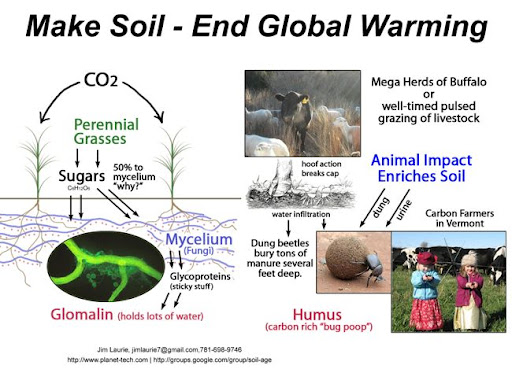You are here
Green Chemistry Business Summit 2007
Planet-TECH Associates was a sponsor and organizer of the first-of-its-kind Green Chemistry Business Summit held in Haverhill, Massachusetts in October of 2007. The objective of the event was to help harness the economic and workforce opportunities for clean manufacturing through Green Chemistry.
A First-of-its-kind Summit of Scientific, Industrial, and Investment Leaders Assembled to Harness the Economic and Workforce Opportunities of Green Chemistry
Northern Essex Community College, Haverhill, MA
October 31, 2007
Summary Notes Prepared by
Seth Itzkan, Planet-TECH Associates, seth.itzkan@gmail.com, and
John Michitson, Former City Council President, Haverhill, michitson@mitre.org
On October 31st, 2007, Northern Essex Community College hosted the Green Chemistry Business Summit - a first-of-its-kind event intended to harness the economic and workforce opportunities for clean manufacturing through Green Chemistry. To meet this objective, the Summit assembled professionals from scientific, industrial, academic, and investment sectors.
Keynote speakers included the two founders of Green Chemistry science: Dr. John Warner and Dr. Paul Anastas. Their joint appearance, a rare occurrence, indicated the importance of the Green Chemistry Business Summit as a benchmark in the evolution of Green Chemistry as a vehicle to stimulate economic growth. Additional keynotes included Dr. Berkeley Cue, retired Vice President of Pfizer, Bruce Rayner, Vice President for Technology Forecasters, and Daniel Hullah, Associate with Rockport Capital Partners. Greg Watson, Assistant Secretary for Clean Energy and Technology in the Executive Office of Energy and Environmental Affairs, delivered greetings from the Governor. Mr. Watson suggested there the efforts to support Green Chemistry in Massachusetts are complimentary the goals of the New England Clean Energy Council, which seeks to accelerate New England's clean energy economy. Summit organizers Seth Itzkan, of President of Planet-TECH Associates, and John Michitson of Haverhill, made opening remarks.
Themes
The Summit explored five facets germane to Green Chemistry business development. Each of these, listed below, is key to growing and maintaining a regional economic leadership in the field. They are:
1. Green Chemistry Science
2. Economic Opportunity for Industry
3. Investment Opportunities
4. Workforce Development Opportunities
5. Technology Transfer & Open Innovation
Findings
• Business Opportunity: Green Chemistry presents an enormous opportunity to harness clean economic growth. The applicable industries run the gamut from pharmaceuticals to electronics. Berkeley Cue of Pfizer showed that Green Chemistry can save the pharmaceutical industry $10B annually, $700M over the lifetime a typical product. There are also important regional opportunities. It was shown there are over 200 bio-pharmaceutical companies in Eastern Massachusetts, all of which can benefit from the cost saving potentials of Green Chemistry. Amy Cannon, Co-Founder of the Beyond Benign Foundation, discussed the potential role of Green Chemistry in supporting regional economic development. The benefits include attracting and maintaining companies, creating a steady supply of jobs, and using local resources.
• European Mandates: European and Asian mandates for toxic products reduction (such as REACH, WEEE, RoHS) are driving manufacturing changes here in the United States.
• International Competition: China and India are far ahead of the United States in Green Chemistry education and research. Not one U.S. chemistry department requires its students to take classes in toxicology.
• Workforce Development: Workforce development and training opportunities are starting to be developed here in Massachusetts to meet the emerging need for industry. David Hartleb of Northern Essex Community College and Mahesh Sharma of Cambridge College each spoke of initiatives their respective institutes are taking to address the need for training in Green Chemistry and related industries. Amy Cannon of the Beyond Benign Foundation discussed efforts underway to promote Green Chemistry curriculum in schools, including projects in collaboration with the Boston Museum of Science.
• Finance: The investment community is paying a growing interest to green technologies. Current areas of focus for Rockport Capital Partners include power electronics, battery technology, biofuels and building materials.
• Intellectual Property Management and Rapid R&D: Innovative models for rapid idea generation and research and development must be employed. The Open Innovation model was presented as ideal for fostering Green Chemistry research. Jon Cronin of InnoCentive discussed the "online marketplace for ideas" and the Innocentive approach of building a global community of solution providers. Innocentive has over 130,000 "solvers" in 175 countries and 60 industry disciplines that share in the global marketplace of industrial and scientific innovation.
• Culture Change: Culture change was often referred to as the key factor in affecting industrial adoption of Green Chemistry. Executives must begin to develop a "systems thinking" approach to product creation and degradation. They must consider a "cradle-to-cradle" perspective in the lifecycle management of their products.
• Cross Industry Collaboration: Cross industry collaboration was considered essential to regional economic development in Green Chemistry. Energy saving and environmentally beneficial innovations developed for one sector may have promise in others. Avenues for cross-sector collaboration and information sharing should be in place to support the growth of a regional economic development in Green Chemistry and other emerging clean technologies.
| Attachment | Size |
|---|---|
| 202.29 KB | |
| 369.79 KB |
- Log in to post comments



